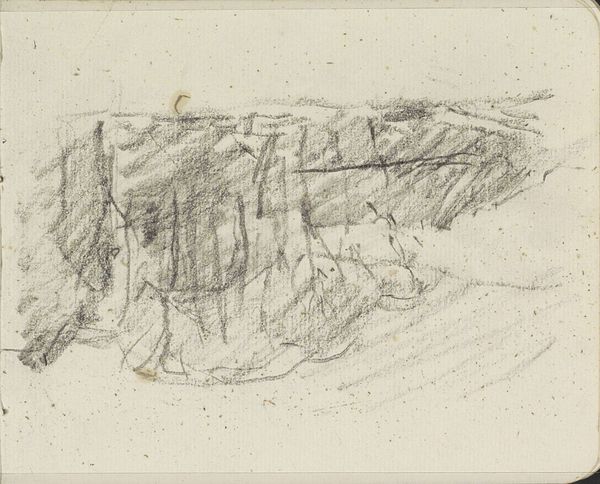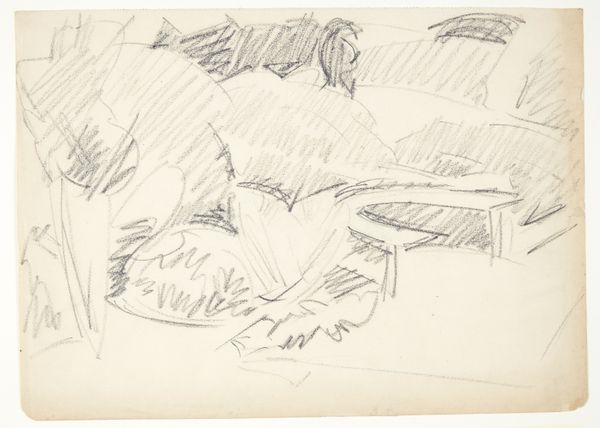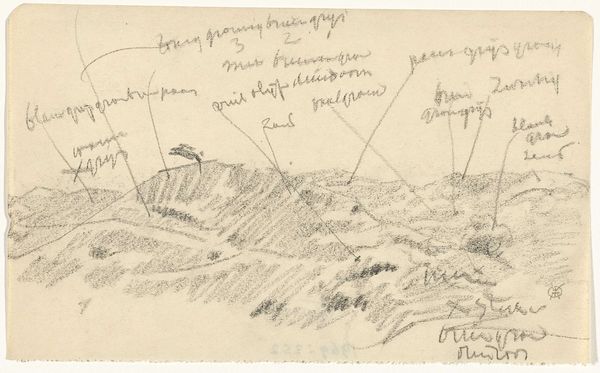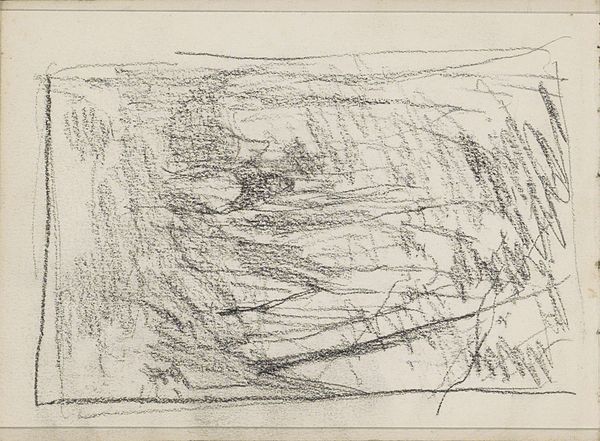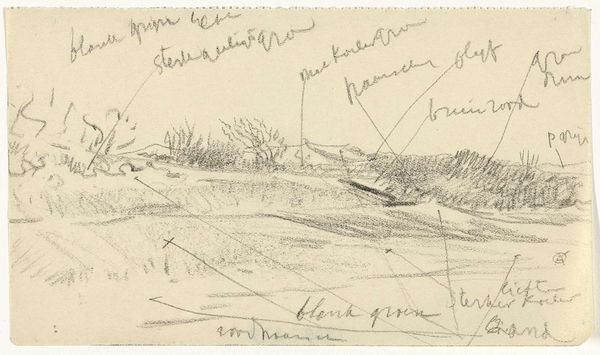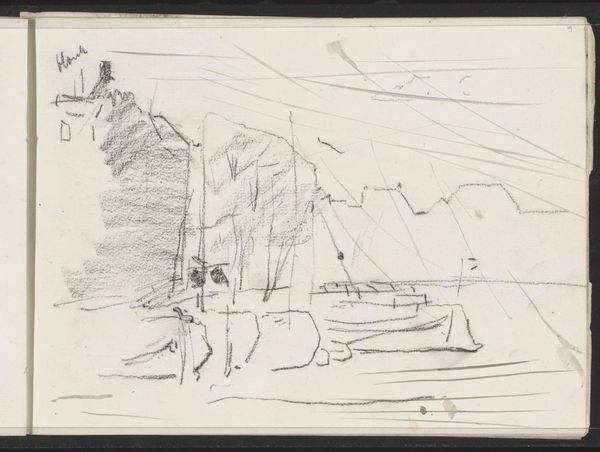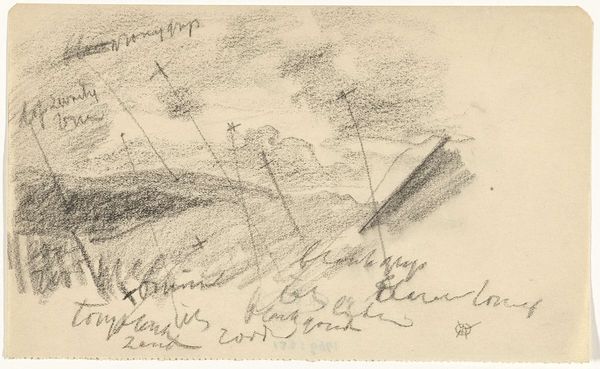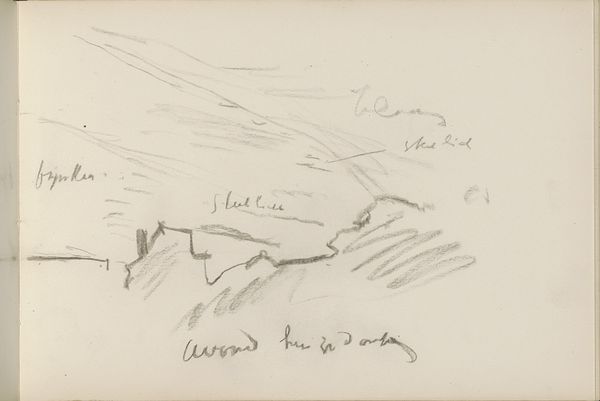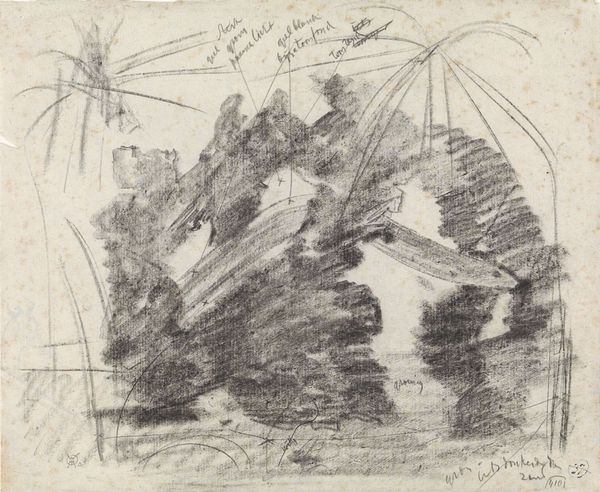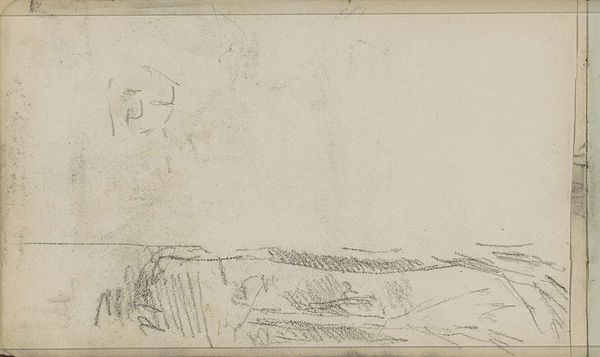
drawing, pencil, graphite
#
drawing
#
pen sketch
#
landscape
#
personal sketchbook
#
sketchwork
#
ink drawing experimentation
#
pen-ink sketch
#
pencil
#
abstraction
#
pen work
#
graphite
#
sketchbook drawing
#
storyboard and sketchbook work
#
sketchbook art
#
initial sketch
Dimensions: height 214 mm, width 280 mm
Copyright: Rijks Museum: Open Domain
Curator: Welcome. Here we have Gerrit Willem Dijsselhof’s “Leeg aquarium”, created sometime between 1876 and 1924. It’s a drawing utilizing graphite, pencil and pen and ink. Editor: Stark, isn't it? The high contrast in tone immediately suggests a sense of loss, almost an elegy within the interplay of light and shadow. Curator: Well, given it’s titled 'Leeg aquarium' - "Empty aquarium" in English - that somber mood tracks. But for me, it's the *process* of its creation that stands out. Look at the layering of pencil strokes, the scratching of ink; it’s a document of artistic labor, thought captured in media. This likely comes from a personal sketchbook; seeing it this way brings us closer to the social realities of artistic production. Editor: While the social context is valuable, can we appreciate its visual structure? Consider how the diagonal lines drive our sight into the picture. They give a structured quality amid the emptiness. There's an interplay of forms, perhaps hinting at aquatic life—a subtle nod to the implied absence. The writing too has its effect. It feels like notes for himself about the colors? How do they structure the overall scene? Curator: Precisely! Those scribbled notes, likely color annotations, offer a peek into Dijsselhof's creative workflow. But let's remember that even material has meaning. Graphite, pencil and ink were readily available and cheap. Dijsselhof made art that spoke to a new emerging art market with an economy in mind. Editor: Perhaps so. But does the intentional rawness of its media lessen from what is evoked by shape and line? Surely it emphasizes the aquarium's haunting emptiness; it lends it a textural dimension far beyond material realities. I see light and dark, weight and levity, even without a focus on societal factors. Curator: Well, both intersect, really. Dijsselhof wasn't simply representing the void, he was physically making it through very economical processes, each layer informing both its message and means. This is how a sense of loss finds its materiality in the making of art. Editor: Interesting to observe the many ways artistic intention can resonate beyond mere visual presentation or historical labor. Thank you for this alternative perspective. Curator: And thank you, for your perspective also brings richness.
Comments
No comments
Be the first to comment and join the conversation on the ultimate creative platform.
